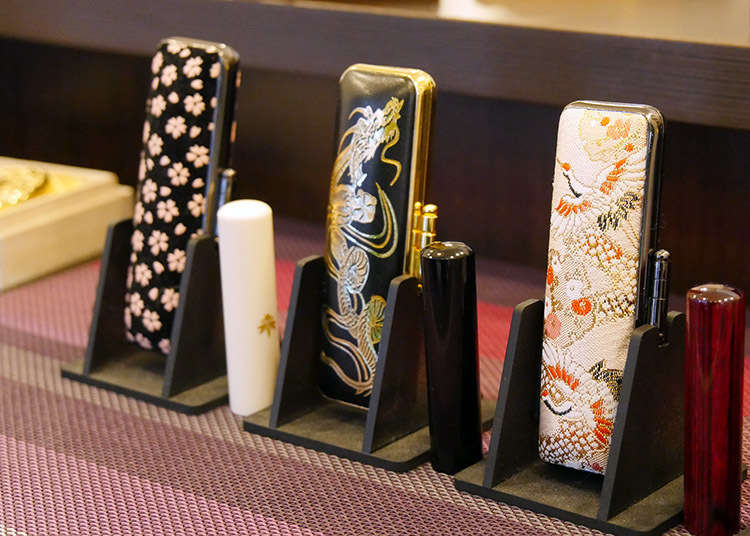
People in Japan typically stamp important documents with their hanko/inkan – their personal seal – instead of signing them!
Although Japan is famously recognized as one of the most technologically advanced countries in the world, contemporary Japanese society still incorporates many traditional elements.
Follow along as we dig into the curious history of hanko stamps – and even share where you can get your own hanko!
Hanko vs. Inkan: what is the difference?
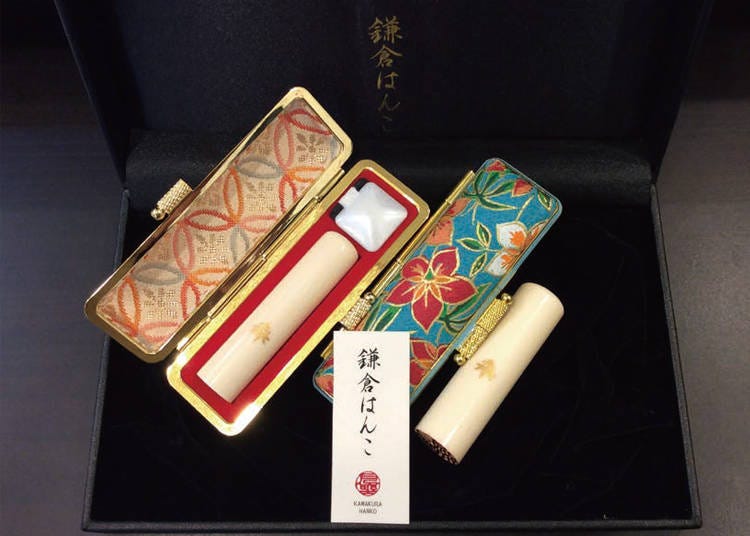
First, let’s kick things off with a clarification of some of the terms we’ll be using. Although there are several words associated with Japanese name stamps, the two keywords you will hear most often are inkan or hanko. Somewhat confusingly, these two words are commonly used interchangeably in Japanese. So what is the difference?
Strictly put, there isn’t a giant difference. Both words refer to a stamp, however ‘hanko’ is somewhat of a more general category as a ‘stamp,’ whereas ‘inkan’ (think: ‘ink’) are more official, representing the same effect as a signature in other cultures.
Inkan come in three main varieties: ‘jitsu-in,’ which are official seals that are registered with the government and which are equivalent to a signature on legal documents; ‘ginko-in,’ which would be registered seals that are used in banking; and ‘mitome-in,’ which are unregistered seals.
Since hanko also make cool souvenirs, here we’ll be introducing more of the variety that don’t have a legal significance.
History of the hanko: Japanese name seal
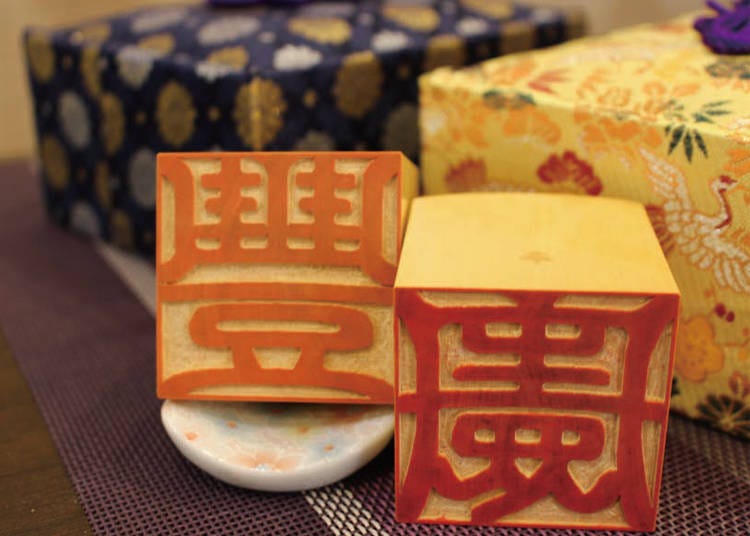
The history of the Japanese name seal dates back to the year 57 CE. Originally it was for the Emperor’s exclusive use, and its possession was bestowed only upon his most trusted aides and vassals, as it represented his authority.
It wasn’t until the 8th century that nobles also started crafting and using their own stamps for all official business. Later on, during the feudal period (1085-1603) the samurai class started using a hanko with red ink, exclusive to this warrior cast.
With the modernization that accompanied the Meiji restoration, the hanko became an item of everyday use for all Japanese people.
In the centuries that saw the hanko evolve from symbol of authority to an item embedded within the whole society, this stamp has not lost its meaning and importance.
Hanko stamps in Japan today
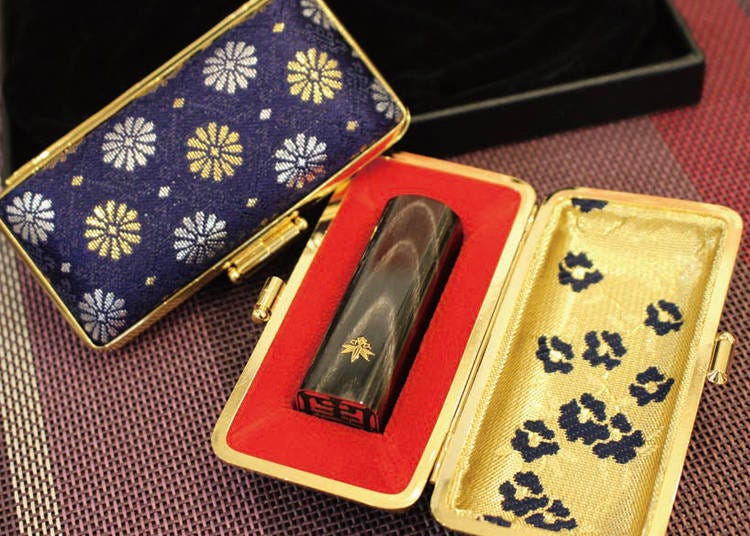
In Japan, the hanko is every bit as official as a signature is in many other countries. It is said that Japan is the only country today that uses a stamp to seal virtually every official document. It may sound quite unique to most, but those who live in Japan, citizens or otherwise, will need to procure a stamp for themselves, in order to function properly within Japanese society.
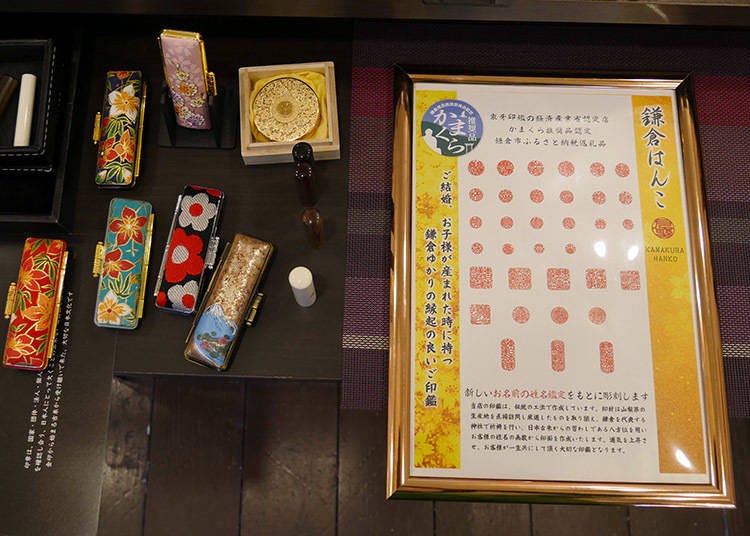
Buying a car, renting or buying an apartment or house, filing for a tax return, signing for mail delivery—all these situations and more require a hanko seal. The same goes for office paperwork, and even art. This stamp carries today practically the same officiality as it has since its inception.
We spoke with Mr. Tsukino, proprietor of Kamakura Hanko and skilled hanko craftsman, to learn more about the role of hanko in contemporary Japanese society. "Hanko are kind of like a dreamcatcher in a sense - they are traditional and essential," ethereally entwined with the spirit of the user. In this manner, hanko become extraordinary heirlooms, being physical representations of the departed - and in a sense, immortalizing them.
As such, one might wonder how the Japanese go about receiving their first hanko. While people will purchase on their own, many families still have a tradition whereby parents or grandparents will gift a family member their first hanko around the occasion of their 20th birthday - when Japanese celebrate the coming of age, thus the hanko becomes part a rite of passage and a symbol of adulthood.
In addition, temples have special seals, called shinji (神璽), which themselves have a unique spiritual connection. "For temples, the seal connects God and mortal - the paper becomes a soothing affirmation that God is present in this space."
This significance remains the same for goshuin - temple seals - whose pages are not like those of a passport, but in essence, become those of a holy book.
Designing your personal hanko seal
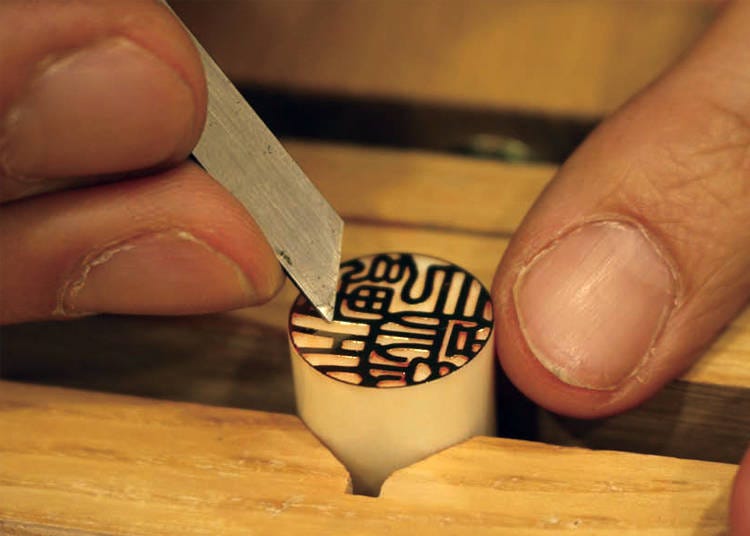
Hanko hold a certain charm for visitors from abroad, and being able to stamp your Japanese name on letters, cards and more is kind of cool. When choosing your hanko you can go for a merely decorative one, for collections, or souvenirs, or for an official one, which you will then use for well... everything.
In any case there are various ways to customize your hanko, plus there are several accessories available with which you can express your own style. Let’s take a look at these!
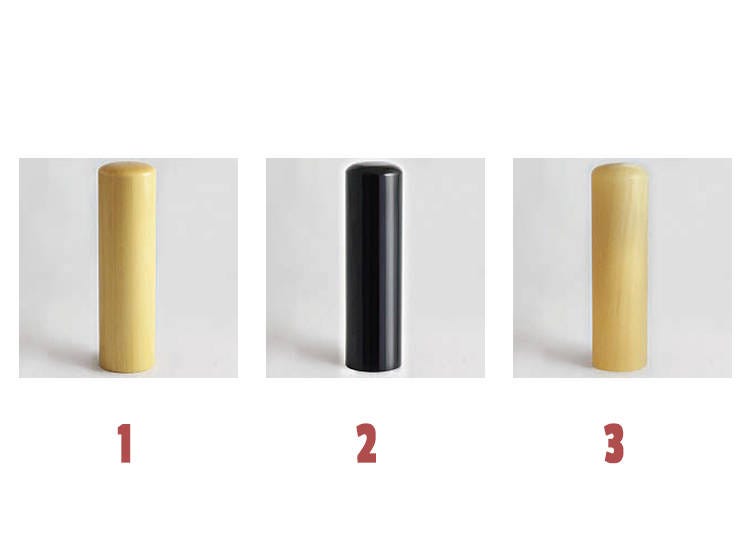
Hanko designs: what material to use for hanko
Built to last, hanko come in several different kinds of materials.
Cheap hanko may be made of plastic, but the designs can be somewhat prone to chipping over time. Typical handmade hanko will be made of a stronger, more durable material. This often includes three materials.
One is tsuge, a natural wood with dense fibers and which stands up to use over time. Another is buffalo horn, which typically comes in black or white colors and has a glossier appearance that creates a sense of strength and style.
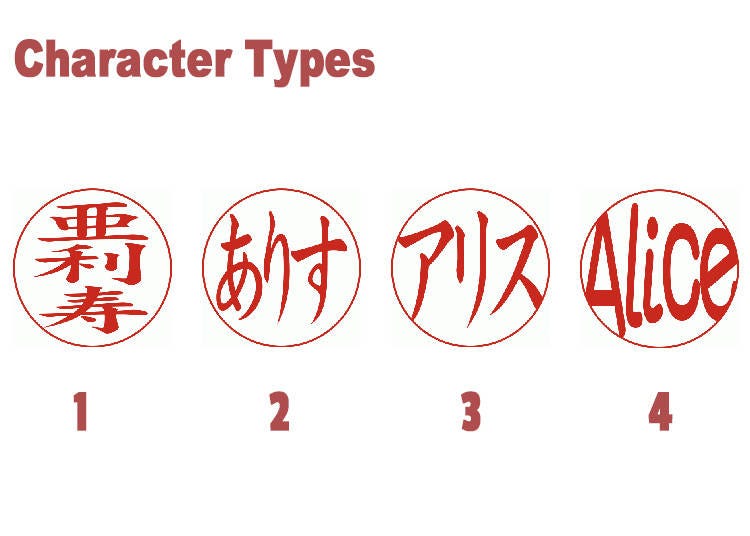
Hanko designs: what character design to use
The face of the hanko can be engraved with kanji (one of the Japanese writing systems, derived from Chinese writing), kana (katakana or hiragana, the other two writing systems used in Japan), or in roman characters.
Japanese people usually use their full name on their stamps, to reduce the chance of counterfeiting, but if your name is spelled in Roman characters or another alphabet-based lettering (like Greek or Cyrillic), you probably won’t be able to fit your whole name.
Here is when you’ll have to plan a little. Official hanko have a standardized size in Japan. The most common one is a diameter of 8mm. You can also get ones up to 25mm, but if you exceed 8mm, you might end up having trouble validating a number of documents.
When choosing what characters to put on your hanko, it’s important to remember that at least part of your name needs to be present. You can use your initials, your last name or first name, or part of it.
You can use a transliteration of your name in katakana, but if you decide to use kanji that read more or less like your name sounds, if you intend to register the hanko officially, note that it will be rejected during the validation process.
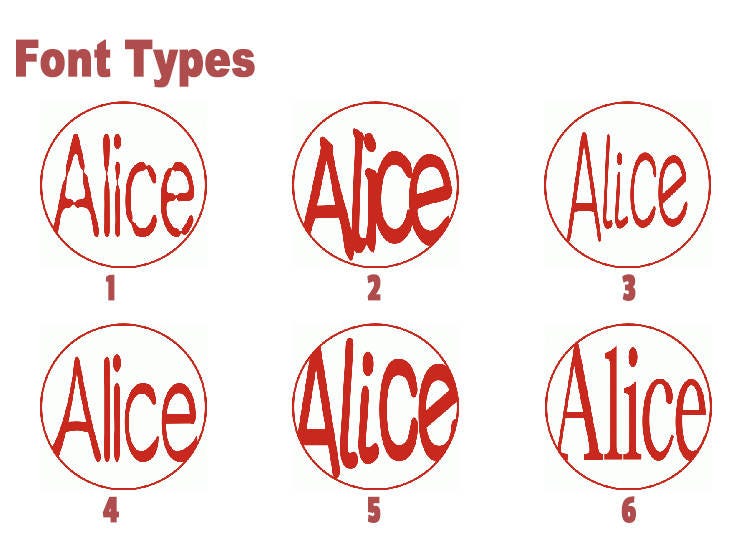
Hanko designs: what font to use
Once again, for an informal hanko, you can technically choose whatever you prefer, but if you’re planning on using your stamp for reasons other than collecting or presenting as a gift, you’ll want to have letters connected to your name.
Generally there can be up to six font styles available.
1- Kointai: A traditional seal style in which easy-to-read characters are composed with rounded corners.
2- Kissoutai: An old font style based on ancient Chinese characters; somewhat clustered in appearance.
3- Tenshotai: Another old “seal script” font that with well-balanced aesthetic it also has symmetrical elements.
4- Reishotai: Known as “clerical script,’ this highly legible font which originated in China has a highly rectilinear structure.
5- Gyoshotai: Derived from clerical script, this semi-cursive font is known for its “running” style which carries the brush marks.
6- Kaishotai: Mainly used on postcards and one of the more basic typefaces, this “regular” script is characterized by its more square appearance.
Buying a generic hanko: Where to find hanko in Japan
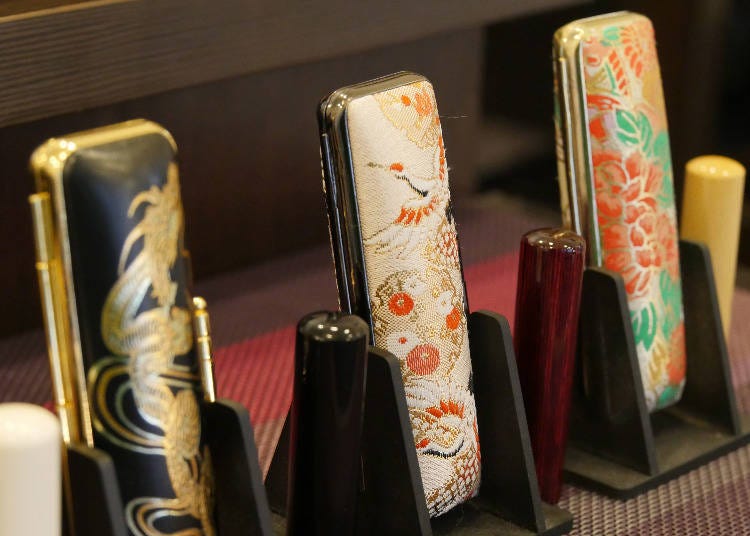
There are a number of hankoya (hanko stores) in Japan. You can also find many online. If you’re not planning to have an official hanko, but instead want to have one or a few just as a memento, or a cute present, you have some options.
You can get generic stamps from many stores like LOFT and other department stores, or from one of the many ¥100 stores all over the country.
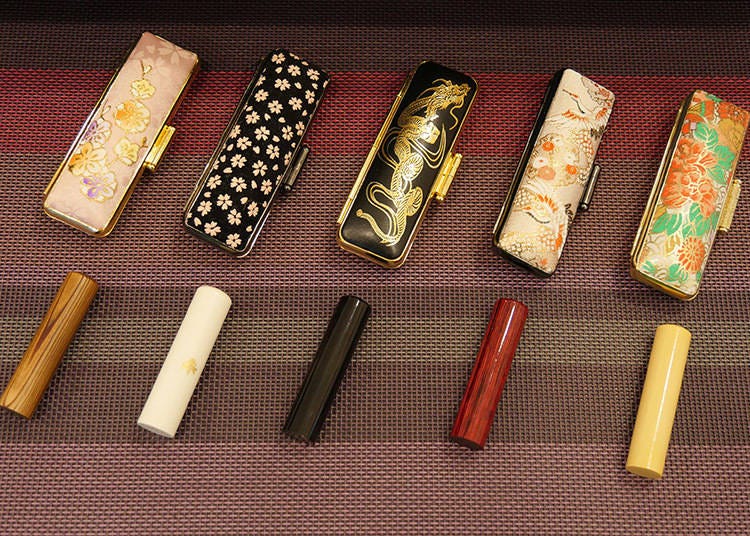
It is important to note that buying a hanko is like buying any other item: you get what you pay for. While you may find a cheap stamp for 100-500 yen, it likely won't stand the test of time.
As you'll see, however, a fully customized option in Japan is still value priced.
How to buy a personalized hanko stamp
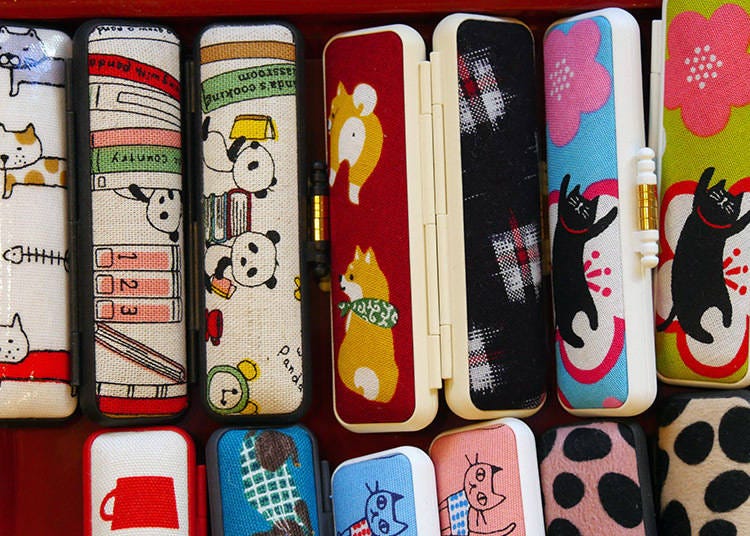
If you’re looking for something different than all the rest – something not off the shelf – you can get a personalized hanko. When buying a personalized hanko, you have much more control over how you wish your name to be presented – and you can even find the perfect case to match your style!
How much does a personalized hanko cost?
You might think that ordering a custom-made hanko is expensive, but in reality, the cost depends on the kind and materials used.
For instance, representative prices at Kamakura Hanko are:
-Wooden 'design' seal: from 3,000 yen
-Acrylic hanko: From 2,980 yen
-Wood/horn: From 10,000 yen, depending on the material
In addition to getting a hanko made, many people will also select a stylish case or other accessories to accompany it.
As you can see, getting a truly one-of-a-kind masterpiece doesn't cost a fortune!

Hanko shops are not too difficult to find in Japan, and often it takes only around half an hour or so to have yours produced. Shops such as Kamakura Hanko are even located near sightseeing areas, letting you drop by and design your hanko before you stroll around, and pick it up before you head back.
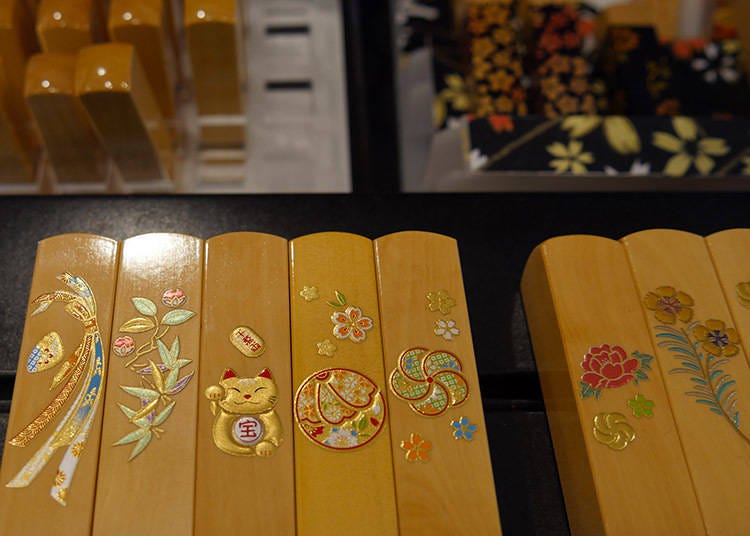
While hanko may be more of a novelty abroad, Mr. Tsukino hopes that people overseas will nevertheless be inspired to design their own unique treasure while in Japan - a heartwarming heirloom.
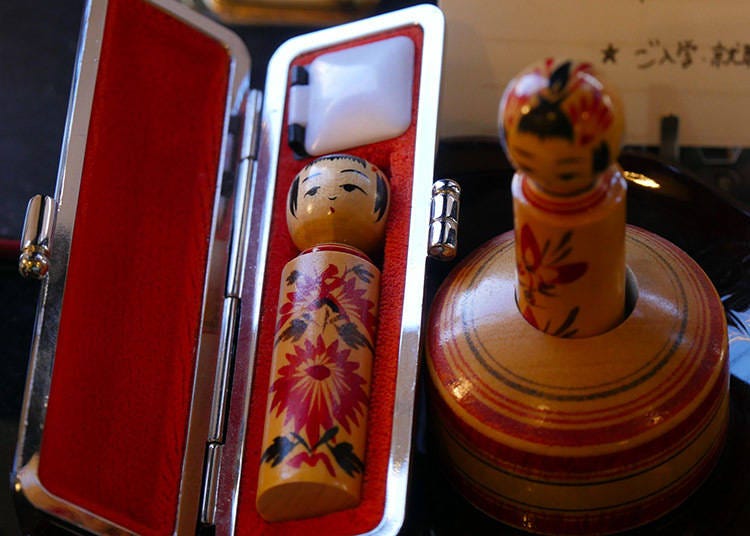
Hanko are a big component of Japanese daily life. Whether you’re looking for an official seal or something take back home to remember your trip by, learning about hanko and their use and origin just allowed you to get a little closer to Japan and its unique blend of tradition and advancements!
Written by:

- Area
- Category
*Prices and options mentioned are subject to change.
*Unless stated otherwise, all prices include tax.
Limited time offer: 10% discount coupons available now!
Recommended places for you
-
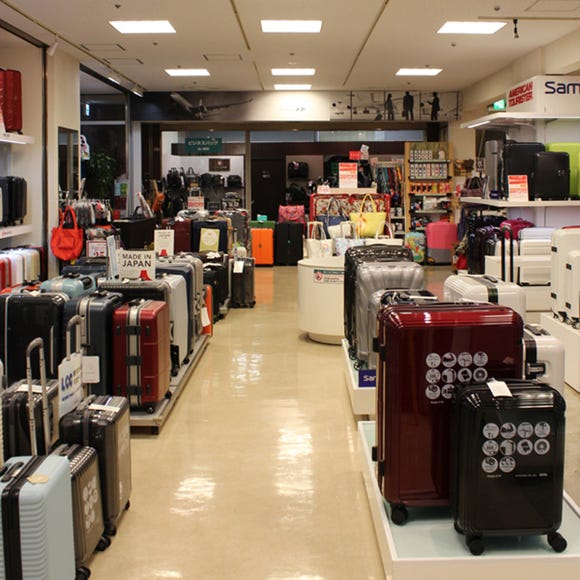
Travel luggage and accessories speciality shop -Toko Yuurakucho Store
Other Shopping
Ginza
-
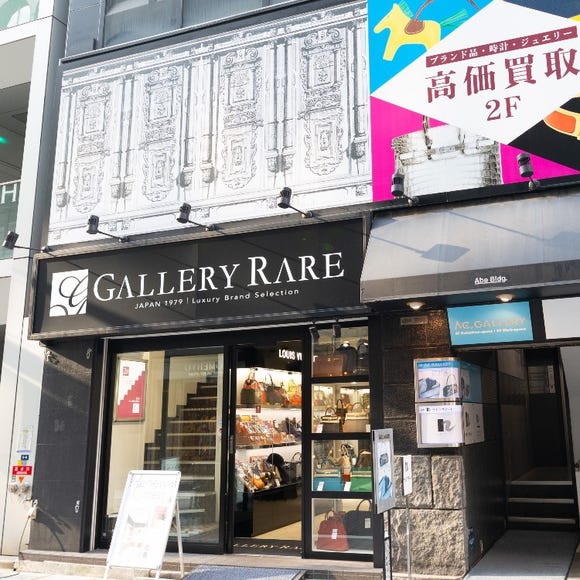
Gallery Rare Ginza Main Store
Other Shopping
Ginza
-

JINS Marunouchi Store
Other Shopping
Tokyo Station
-
Goods
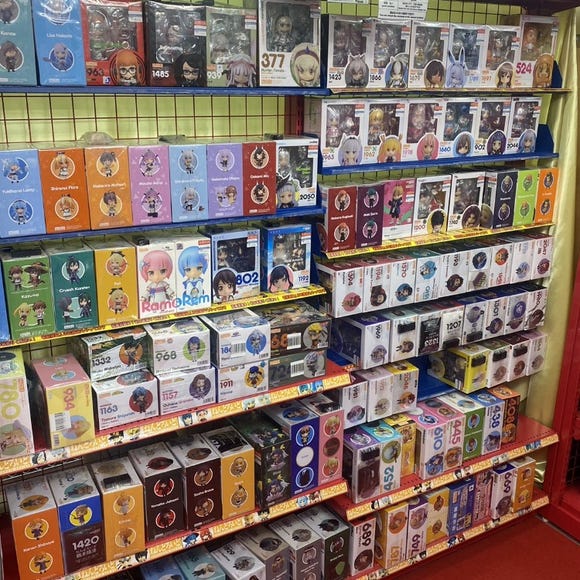
OTACHU.AKIHABARA
Other Shopping
Akihabara
-

JINS Yurakucho Marui Store
Other Shopping
Ginza
-
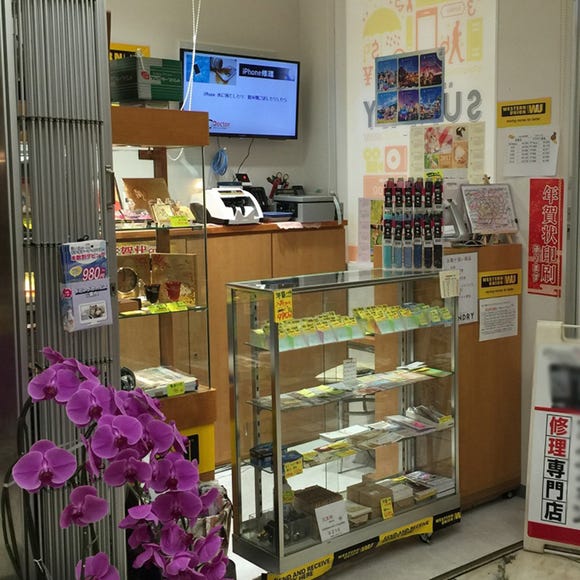
Ticket Sundry
Other Shopping
Ginza
-

Step Into the Story: Inside Immersive Fort Tokyo
-

Where to Eat in Yokohama: 10 Must-Try Restaurants for Yakiniku, Izakayas, Unique Dining & More
-

Discover Osaka Station City: A Journey Through Its Most Fascinating Spots
-

15 Must-Try Sushi Restaurants in Tokyo (+5 Trending Areas to Explore for Foodies)
-

The CASIO S100: How CASIO's Masterpiece Calculator Redefines Business Elegance With Japan-Made Reliability
-

Best Things to Do in Tokyo in April 2024: Events, Festivals & More
-

Let's buy the whole kawaii culture ♪
-
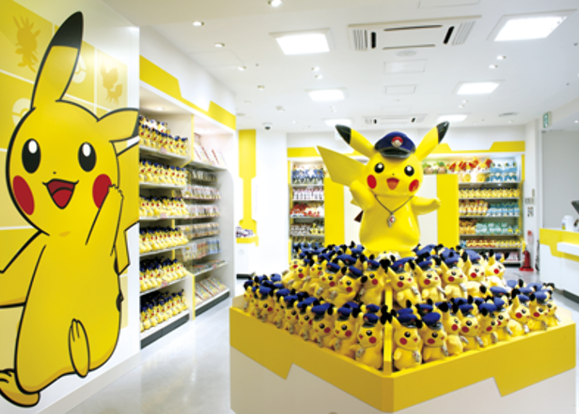
5 Best Pokemon Centers and Pokemon Stores in Tokyo: Catch Them All!
-
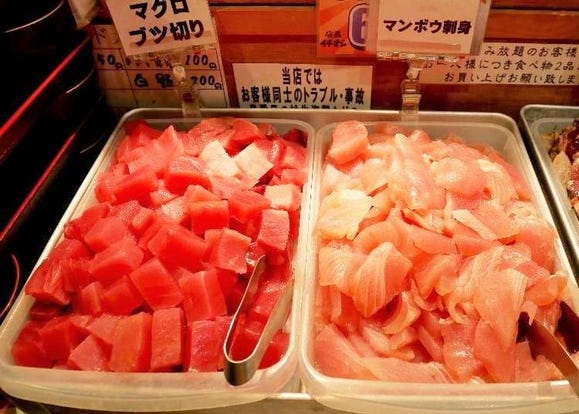
Numazuko Kaisho in Ueno: Good Quality, All-You-Can-Eat Seafood for Just US$12!?
-

Shibuya Crossing: Getting the Best View from the Deck at Magnet by Shibuya109!
-
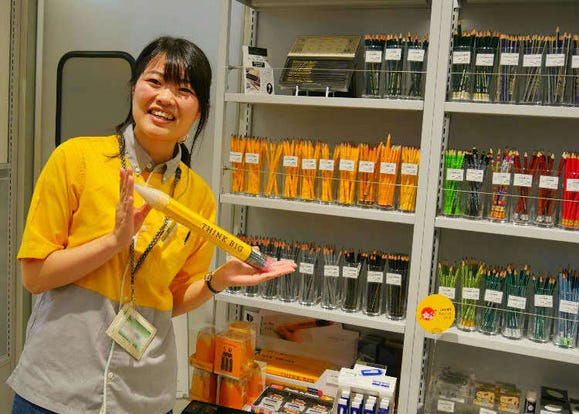
Ginza Loft: Souvenir and Gift Shopping Paradise
-
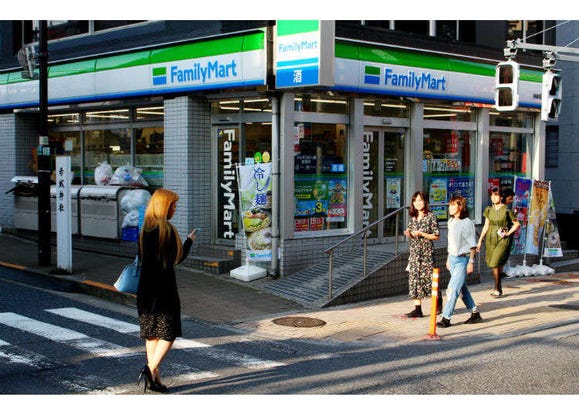
10 Important Japanese Phrases to Know Before You Enter a Japanese Convenience Store!
- #best ramen tokyo
- #what to buy in ameyoko
- #what to bring to japan
- #new years in tokyo
- #best izakaya shinjuku
- #things to do tokyo
- #japanese nail trends
- #what to do in odaiba
- #onsen tattoo friendly tokyo
- #daiso
- #best sushi ginza
- #japanese convenience store snacks
- #best yakiniku shibuya
- #japanese fashion culture
- #best japanese soft drinks















